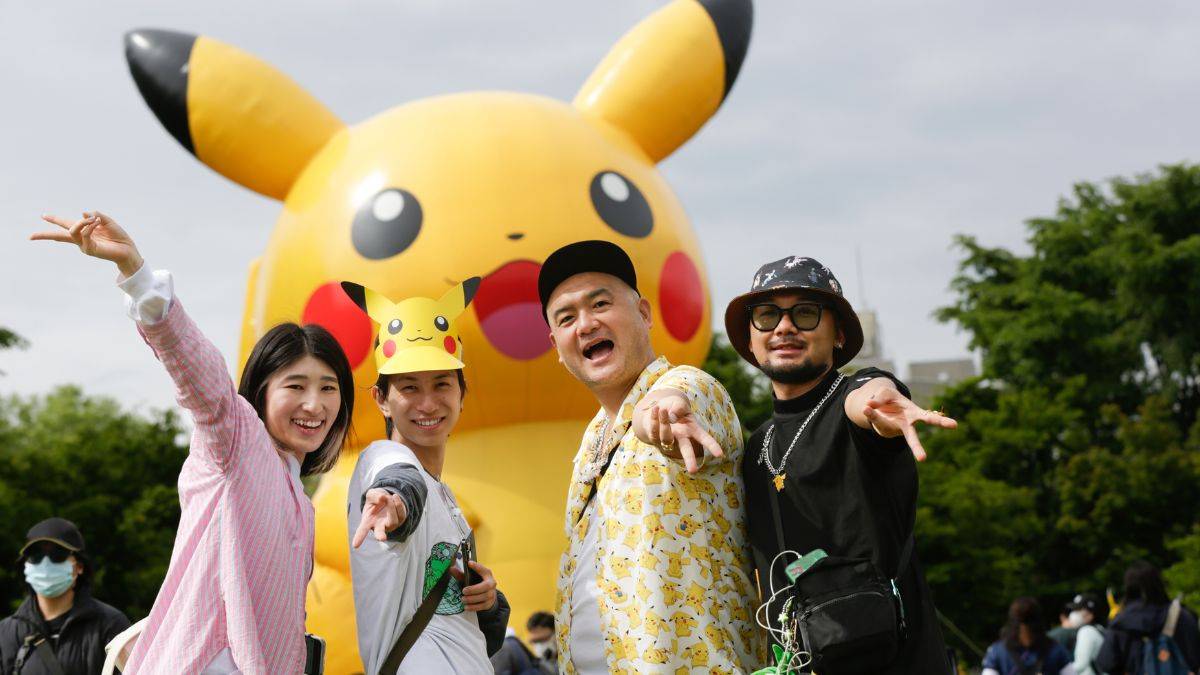Microsoft Hikes Xbox Prices; Analysts Predict Similar Moves by PlayStation
A few weeks ago, Microsoft raised the prices of all its Xbox Series consoles and many of its accessories globally, confirming that some new games would cost $80 this holiday season. Just a week earlier, PlayStation similarly raised prices on consoles in some regions, and shortly before that, Nintendo bumped its Switch 2 accessory prices and announced its own first $80 game.
The tariff-induced price hikes have arrived, and if you’re tracking the developments news story by news story, the numerous increases across nearly everything can be overwhelming. To make sense of it all following Xbox’s announcement, I consulted a group of analysts to understand what's happening, how much more expensive gaming might become in the next year or so, and whether the video game industry or Xbox, or any other platform, faces an existential threat. The reassuring news is that video games, consoles, and major platforms aren't going anywhere.
However, the less favorable news is that we are likely to pay significantly more for video games and related products.
Why is it all so dang expensive?
My first question to the analysts was straightforward: why? Why did Microsoft choose now to raise its console and accessories prices so drastically? The answers I received were clear and echoed sentiments we've heard frequently: tariffs. While rising development and manufacturing costs play a role, it's primarily tariffs—or the fear of them—as U.S. President Donald Trump toggles different tariffs for various countries on and off again.
“Microsoft's consoles are made in Asia, so seriously: who in this world can now be surprised about these price hikes?” asked Dr. Serkan Toto, CEO of Kantan Games, Inc. He added that high prices were inevitable, but the recent tariff chaos in the U.S. provided a timely backdrop for announcing the increase with minimal risk of backlash. “It was a clever move from Microsoft to use the current economic climate as a backdrop to not only push the price hikes in the U.S. but also globally. What was also clever is that they did this in one fell swoop instead of riling up fans over a longer period of time and from one territory to the next.”
Joost van Dreunen, NYU Stern professor and author of the SuperJoost Playlist newsletter, concurred with Toto’s view on Microsoft's strategy of raising all prices at once. “Microsoft is ripping off the Band-Aid all at once rather than death by a thousand cuts. I read Microsoft's synchronized global price adjustment as a strategic recalibration in response to tariff pressures rather than incremental market testing. By implementing comprehensive increases across hardware, subscriptions, and first-party titles simultaneously, they're consolidating consumer reaction into a single news cycle while attempting to maintain their pricing position relative to competitors in what's becoming an increasingly service-oriented market where hardware is merely the entry point.”
Other analysts also pinpointed tariffs as a key factor. Manu Rosier, director of market intelligence at Newzoo, noted that the timing of the price increase well ahead of the holiday season allowed Xbox’s partners and consumers time to adjust their expectations. Rhys Elliott, head of market analysis at Alinea Analytics, highlighted that while digital software wouldn’t be directly affected by tariffs, the price increase for games would help offset the higher hardware manufacturing costs due to tariffs. “If costs increase in one part of the business, balancing the books elsewhere is necessary. That’s largely what’s going on here.”
Piers Harding-Rolls, game research director at Ampere Analytics, emphasized other non-tariff factors contributing to the inevitable Xbox hardware price increase: “The macroeconomic backdrop is also a contributing factor, with higher-than-expected persistent inflation and increases in supply chain costs. The launch price of Switch 2 and Sony’s recent price hike will have made it easier to move now. It’s also not a surprise that the company waited until after the earnings announcement.
“I think Microsoft probably saw a significant gap between its entry-level pricing and that of PS5 and Switch 2. Even with a 27% increase in the U.S., the cheapest Xbox Series S console is $70 cheaper than the Switch 2, so there was a lot of headroom there. The increases are generally the heaviest in the U.S. in percentage increase terms and I think we can lay that at the door of the tariff policy. Beyond the U.S., price increases in the EU and UK are generally more sedate and are more heavily focused on the cheaper consoles in the portfolio.”
Blinking Third
The bigger question is whether Sony will follow suit with price increases on PlayStation hardware, accessories, and games. Nearly every analyst I consulted believes this is likely, especially regarding $80 games. Elliott was particularly confident: “This is just the beginning. On top of the hardware price hikes, we’ll likely see PlayStation increasing software prices as well. With Nintendo and Xbox raising software prices, the floodgates are now open. Every publisher — first- and third-party, PC and console alike — that can charge $80 will charge it. The market will bear it. Plenty of gamers are willing to pay price points above $70, as shown by the high numbers of those willing to pay $100 for a few days’ early access (which can be in the millions for some games, as per our data).”
Elliott further explained that a higher ceiling might lead to more varied pricing, with games at $50, $60, $70, and other price points. Lower-priced games could sell more copies due to the perceived discount. (Notably, after we spoke with Elliott and others, EA specifically said it would not raise prices on its games... for now.)
“Alinea data shows that when a game’s price is discounted below $50 on Steam, for example, many gamers bite the bullet and buy,” he continued. “For similar reasons, I expect to see games launching at $80, maximising launch sales among superfans, then the price decaying over time, leading to a longer tail for premium game sales. This already happens to some extent, but I think it will be an even bigger part of pricing strategies for publishers going forward.”
Regarding hardware, Daniel Ahmad, director of research and insights at Niko Partners, noted that Sony had already raised its console prices in certain regions, but the U.S. might be next. “Sony has raised the price of its console multiple times outside the U.S.,” he said. “There is a reluctance from both Sony and Microsoft to raise prices in the U.S. given the size and importance of the market when it comes to console sales. That being said, we would not be surprised to see Sony follow suit with price increases on the PS5 in the U.S.”
James McWhirter, senior analyst at Omdia, added an observation: “PS5 hardware is predominantly manufactured in China, exposing Sony's supply chain to greater risk from tariffs originating from the U.S. Yet what we consistently observe in the console market is that up to half of consoles are typically sold during Q4, the final quarter of the year. This bought both Microsoft and Sony more time to rely on existing inventories. In 2019, consoles were granted an exemption from tariffs on goods from China, but this ruling did not come into effect until August.
“With Microsoft having blinked first with price readjustments this week, it now opens the door for Sony to follow with PS5. This is going to be a particularly tough decision in the U.S., the world's largest console market, which has historically been spared — save for PS5 Digital rising by $50 in late 2023.”
When I asked Mat Piscatella at Circana, he was cautious about making bold predictions about Sony’s actions. However, he referenced what the Entertainment Software Association had to say about the impact of tariffs on video game prices, noting that rising prices were “the symptom, not the disease.”
And while we discussed Sony specifically, Nintendo mentioned it may consider “what kind of price adjustments would be appropriate” if tariffs continue to fluctuate.
Video Games Are Fine... But Are We?
In the wake of Xbox’s price increases and the growing suspicion that Sony may follow suit, some have speculated that this could do more harm than good for console manufacturers. It’s one thing to increase revenue from console and accessory sales, but what if consumers can't afford them?
Fortunately for these multi-million dollar corporations, the analysts I spoke with don’t believe this will be a significant issue. Several experts cited Microsoft’s recent 'This Is An Xbox' campaign as evidence that Xbox has been preparing for this shift for some time. While fewer people might buy Xbox consoles, the company's hardware sales have been declining for a while, and it’s been rebranding itself as a service platform rather than a hardware-centric experience. Plus, there’s always the anticipation of GTA 6!
“Xbox hardware sales revenue has been in decline, and I see that continuing, moderated to an extent by the higher price points,” said Harding-Rolls. “We expect a boost in Q2 2026 due to the launch of GTA 6. Last quarter Microsoft gaming hardware sales fell by 6% and the prediction is for a further drop next quarter. Overall, I think higher prices have some dampening effect, but the delay of GTA 6 is probably more significant in terms of 2025 performance.”
More broadly, the analysts suggested that overall game spending might not decline significantly—it might just shift. As Elliott explained: “The rising prices won’t necessarily reduce spending. Even in the toughest of economic times, games are incredibly price-inelastic. The market will bear it. Early adopters will always be early adopters. PlayStation and Nintendo console sales have been tracking above or in-line with previous generations, despite consoles not dropping in price like previous generations. PlayStation actually increased its unit prices for the PS5, while Nintendo did for the Switch more stealthily by charging more for the OLED model. What’s more, in-app purchases generate vast spending these days — more than premium game purchases when looking at the market as a whole.”
Rosier agreed: “Not necessarily a decline, but we may see shifts in where and how money is spent. As prices rise, consumers may become more selective — spending less on individual full-priced titles and more on subscriptions, discounted bundles, or long-tail live-service games. The total spend may remain steady or even grow modestly, but the distribution across formats and platforms will likely continue to evolve. Xbox’s pricing changes, and similar moves by others, could accelerate this transition toward services and ecosystems over standalone product purchases.”
Harding-Rolls added that the U.S. might feel more of the impact due to its status as the largest console market and the localized tariffs. Ahmad suggested that the Asian and MENA markets, while still affected by global economic factors, would likely continue to grow, particularly in countries like India, Thailand, and China. Regarding software, McWhirter noted that while full game pricing has not historically followed inflation and is more susceptible to consumer pushback, Xbox’s quick move to $80 full-priced games following Nintendo implies that other publishers will soon follow.
“Importantly, we don't expect this to directly impact sales volumes, especially given 2025's high-quality content pipeline — but publishers will continue to explore ways in which they can add value post-release,” he continued. “Many already do this via frequent discounting, multi-tiered pricing strategies, DLC, bundling. On the platform holder side, companies like Nintendo can always pull the right levers after launch — we expect Nintendo Switch Online Game Vouchers to make a return at a higher price point to accommodate $80 games.”
Piscatella was less optimistic but echoed the general sentiment of uncertainty that has been prevalent since tariff discussions began: “My expectation for the remainder of the trade war is that consumers will shift even more towards free-to-play and other more easily accessible forms of gaming, including games they already own or have access to. Games like Fortnite, Minecraft, Roblox, etc will likely see even more players and hours spent in their ecosystems. Players will also rely on and continue to play devices they already own a bit more rather than buy new hardware. And, as prices rise in everyday spending categories like food, gas, shelter, automotive, etc, there will be fewer and fewer dollars available for categories like gaming in the U.S.
“I was trying to hold on to the +4.8% outlook I had at the beginning of the year for as long as I could, but that's looking more and more foolishly optimistic every day. Can easily see a high single-digit percentage decline, or even into the teens, depending on the other dominoes that fall when it comes to pricing. The error bars on any forecast are bigger now than they've ever been given the uncertainty in the market.”
- 1 STARSEED Update: Codes for January 2025 Released Feb 25,2025
- 2 Pokémon TCG Pocket: Wonder Pick Date, Time, and Promo Cards – February 2025 Mar 03,2025
- 3 How to Get All Ability Outfits in Infinity Nikki Feb 28,2025
- 4 Black Myth: Wukong Tops Steam Charts Days Before its Launch Jan 07,2025
- 5 Project Zomboid: All Admin Commands Jan 05,2025
- 6 Ukrainian Internet Stalled as 'S.T.A.L.K.E.R. 2' Release Overwhelms Dec 30,2024
- 7 inZOI, a Korean Sims-Like, Delayed to March 2025 Mar 01,2025
- 8 Starseed Asnia Trigger Codes (January 2025) Mar 06,2025
-
Budgeting & Investing: Your Guide to Financial Apps
A total of 9
-
Addictive Hypercasual Games for Quick Play
A total of 10
-
Best Role Playing Games for Android
A total of 10






























